Related Research Articles
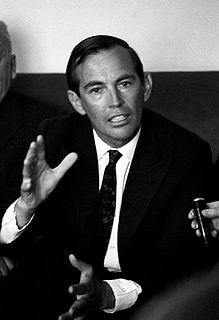
Christiaan Neethling Barnard was a South African cardiac surgeon who performed the world's first human-to-human heart transplant operation. On 3 December 1967, Barnard transplanted the heart of accident-victim Denise Darvall into the chest of 54-year-old Louis Washkansky, with Washkansky regaining full consciousness and being able to talk easily with his wife, before dying eighteen days later of pneumonia, largely brought on by the anti-rejection drugs that suppressed his immune system. Barnard had told Mr. and Mrs. Washkansky that the operation had an 80% chance of success, an assessment which has been criticised as misleading. Barnard's second transplant patient, Philip Blaiberg, whose operation was performed at the beginning of 1968, lived for a year and a half and was able to go home from the hospital.

Organ donation is the process when a person allows an organ of their own to be removed and transplanted to another person, legally, either by consent while the donor is alive or dead with the assent of the next of kin.
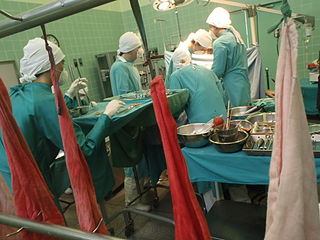
Organ transplantation is a medical procedure in which an organ is removed from one body and placed in the body of a recipient, to replace a damaged or missing organ. The donor and recipient may be at the same location, or organs may be transported from a donor site to another location. Organs and/or tissues that are transplanted within the same person's body are called autografts. Transplants that are recently performed between two subjects of the same species are called allografts. Allografts can either be from a living or cadaveric source.
Peter Munk was a Hungarian-Canadian businessman, investor, and philanthropist. He was the founder and chief executive officer of a number of high-profile business ventures, including the hi-fi electronics company Clairtone, real estate company Trizec Properties, and Barrick Gold, the world's largest gold-mining corporation.
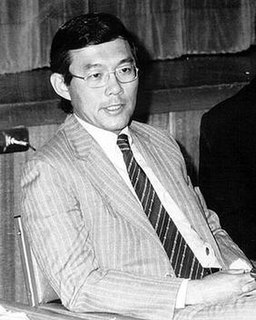
Victor Peter Chang, AC, was a Chinese born Australian cardiac surgeon and a pioneer of modern heart transplantation. After completing his medical studies at the University of Sydney and working in St Vincent's Hospital, he trained in the United Kingdom and the United States as a surgeon before returning to Australia. In St Vincent's Hospital, he helped establish the National Cardiac Transplant Unit, the country's leading centre for heart and lung transplants. Chang's team had a high success rate in performing heart transplantations and he pioneered the development of an artificial heart valve.

The Toronto General Hospital (TGH) is a major teaching hospital in Toronto, Ontario, Canada and the flagship campus of University Health Network (UHN). It is located in the Discovery District of Downtown Toronto along University Avenue's Hospital Row; it is directly north of The Hospital for Sick Children, across Gerrard Street West, and east of Princess Margaret Cancer Centre and Mount Sinai Hospital. The hospital serves as a teaching hospital for the University of Toronto Faculty of Medicine. In 2021, Newsweek ranked TGH as the 4th best hospital in the world and 1st in Canada. In 2019, the hospital was ranked first for research in Canada by Research Infosource for the ninth consecutive year.

Sir Magdi Habib Yacoub, is a Coptic Egyptian-British retired professor of cardiothoracic surgery at Imperial College London, best known for his early work in repairing heart valves with surgeon Donald Ross, adapting the Ross procedure, where the diseased aortic valve is replaced with the person's own pulmonary valve, devising the arterial switch operation (ASO) in transposition of the great arteries, and establishing the heart transplantation centre at Harefield Hospital in 1980 with a heart transplant for Derrick Morris, who at the time of his death was Europe's longest-surviving heart transplant recipient. Yacoub subsequently performed the UK's first combined heart and lung transplant in 1983.

Bernard Lown was a Lithuanian-American cardiologist and inventor. Lown was the original developer of the direct current defibrillator for cardiac resuscitation, and the cardioverter for correcting rapid disordered heart rhythms. He introduced a new use for the drug lidocaine to control heartbeat disturbances.

The Victor Chang Cardiac Research Institute (VCCRI) is an Australian non-profit medical research facility that is dedicated to finding cures for cardiovascular disease. With headquarters located in Darlinghurst, New South Wales, the research hub is home to more than 20 research laboratories and the Victor Chang Cardiac Research Institute Innovation Centre. The institute's mission is "the relief of pain and suffering, and the promotion of well-being, through an understanding of the fundamental mechanisms of cardiovascular disease". Its key research is focused on the prevention and treatment of various heart diseases, including arrhythmia, cardiac arrest, cardiomyopathy, congenital heart disease, heart attack, heart failure, high cholesterol, obesity, spontaneous coronary artery dissection (SCAD) and stroke.
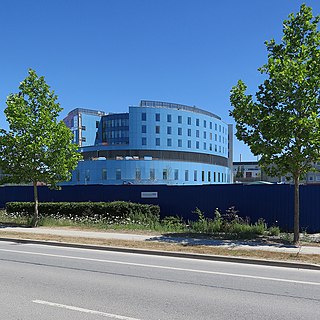
Royal Papworth Hospital is a specialist heart and lung hospital, located on the Cambridge Biomedical Campus in Cambridgeshire, England. The Hospital is run by Royal Papworth Hospital NHS Foundation Trust.
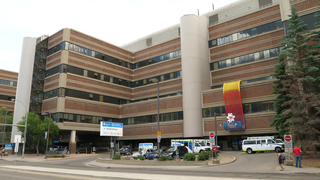
The Stollery Children's Hospital is a 218 bed children's hospital that opened in October 2001. It is a "hospital within a hospital," being situated within the University of Alberta Hospital and co-located with Mazankowski Alberta Heart Institute in the Walter C. Mackenzie Health Sciences Centre in Edmonton, Alberta, Canada.
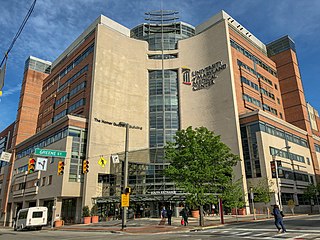
The University of Maryland Medical Center (UMMC) is a teaching hospital with 757 beds based in Baltimore, Maryland, that provides the full range of health care to people throughout Maryland and the Mid-Atlantic region. It gets more than 35,000 inpatient admissions and 165,000 outpatient visits each year. UMMC has approximately 6,500 employees as well as 1,000 attending physicians, and provides training for about half of Maryland's physicians and other health care professionals. All members of the medical staff are on the faculty of the University of Maryland School of Medicine.
Morton Maimon Mower was an American cardiologist specializing in electrophysiology and the co-inventor of the automatic implantable cardioverter defibrillator. He served in several professional capacities at Sinai Hospital and Cardiac Pacemakers Inc. In 1996, he became the chairman and chief executive officer of Mower Research Associates. He was inducted into the National Inventors Hall of Fame in 2002 for the development of the automatic implantable cardioverter defibrillator with Michel Mirowski in the 1970s. He continued his research in the biomechanical engineering laboratories at Johns Hopkins University.

Jose Chacko Periappuram is an Indian cardiac surgeon and medical writer who performed the first successful heart transplant in the state of Kerala, India, as well as the first successful heart retransplant in the country. His other achievements include the first beating heart, awake bypass and total arterial revascularization surgeries in the state. Periappuram is a fellow of the Royal College of Surgeons of Edinburgh, the Royal College of Surgeons of Glasgow and the Royal College of Surgeons of London. He is the founder and Chairman of "Heart Care Foundation", a charitable trust that financially assists poor heart patients. The Government of India awarded him the Padma Shri, the fourth highest civilian award, in 2011.

A heart transplant, or a cardiac transplant, is a surgical transplant procedure performed on patients with end-stage heart failure or severe coronary artery disease when other medical or surgical treatments have failed. As of 2018, the most common procedure is to take a functioning heart, with or without both lungs, from a recently deceased organ donor and implant it into the patient. The patient's own heart is either removed and replaced with the donor heart or, much less commonly, the recipient's diseased heart is left in place to support the donor heart.
Organ donation in the United States prison population is the donation of biological tissues or organs from incarcerated individuals to living recipients in need of a transplantation.

Organizations from around the world responded to the West African Ebola virus epidemic. In July 2014, the World Health Organization (WHO) convened an emergency meeting with health ministers from eleven countries and announced collaboration on a strategy to co-ordinate technical support to combat the epidemic. In August, they declared the outbreak an international public health emergency and published a roadmap to guide and coordinate the international response to the outbreak, aiming to stop ongoing Ebola transmission worldwide within 6–9 months. In September, the United Nations Security Council declared the Ebola virus outbreak in the West Africa subregion a "threat to international peace and security" and unanimously adopted a resolution urging UN member states to provide more resources to fight the outbreak; the WHO stated that the cost for combating the epidemic will be a minimum of $1 billion.
Uganda Heart Institute (UHI), is a specialized, public, tertiary care medical facility owned by the Uganda Ministry of Health. It is a component of Mulago National Referral Hospital, the largest hospital in Uganda, which serves as the teaching hospital of Makerere University College of Health Sciences.
Organ transplantation in the Indian state of Tamil Nadu is regulated by India's Transplantation of Human Organs Act, 1994 and is facilitated by the Transplant Authority of Tamil Nadu (TRANSTAN) of the Government of Tamil Nadu and several NGOs. Tamil Nadu ranks first in India in deceased organ donation rate at 1.8 per million population, which is seven times higher than the national average.

Jo Ann McGowan was an American philanthropist, the founder and CEO of the non-profit organizations: "Global Healing" and "Heart to Heart International Children's Medical Alliance", the founder of the Jo Ann Medical Center in Georgia.
References
- ↑ Rasmussen, Fred (Jul 10, 1993). "Sapperstein, had vending business, founded Save-A-Heart FoundationSapperstein, had vending business, founded Save-A-Heart Foundation". The Baltimore Sun. Retrieved 9 June 2022.
- ↑ Bernard Sapperstein, founder and President of Save a Heart Foundation, after his near to death experience he decided to create the foundation to collect $500.000.
- ↑ Ms. Anick was at the time, the woman who had the world's longest survival after a heart transplant.
- ↑ Dr. Israel S. Zinberg, member of the medical advisory board of the Save a Heart Foundation, also a founder.
- ↑ The contributions of the Foundation are into the millions of dollars, around 8 million, since its creation.
- ↑ Frederick P. McGehan (November 23, 1973), "Woman with transplanted heart leads full life", The Sun, retrieved December 4, 2010
- ↑ Laura Charles (March 23, 1983), "It's enough to give YouTube fright", The Sun, retrieved December 4, 2010
- ↑ "HERE'S TO 1983", The Sun, April 10, 1983, retrieved November 7, 2010